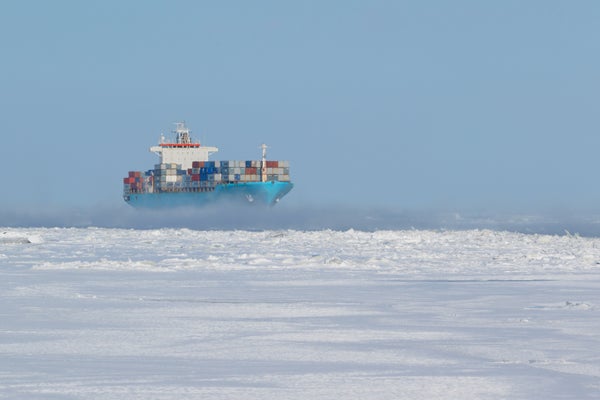Tropical storm Debby slammed Florida with torrential rain and high winds, contributing to at least four deaths as it turned menacingly toward the Eastern Seaboard’s low-lying regions and threatened to flood some of America’s most historic Southern cities.
Record-setting rain was expected to cause flash flooding, with up to 76 centimetres possible in some areas, the U.S. National Hurricane Center said. The potential for high water threatened the historic cities of Savannah, Ga., and Charleston, S.C. Up to 46 centimetres was forecast in central and north Florida.
Florida Gov. Ron DeSantis warned that just because the storm is moving into Georgia, it doesn’t mean the state won’t continue to see threats as waterways north of the state border fill up and flow south.
“It is a very saturating, wet storm,” he said during an afternoon briefing at the state’s emergency operations centre. “When they crest and the water that’s going to come down from Georgia, it’s just something that we’re going to be on alert for not just throughout today, but for the next week.”
Debby made landfall along the Gulf Coast of Florida early Monday as a Category 1 hurricane. It has since weakened to a tropical storm and is moving slowly, covering roads with water and contributing to at least four deaths.
Tropical storm Debby walloped Florida’s Big Bend region Monday morning, bringing a torrential downpour that flooded roads and knocked out power to over 235,000 homes and businesses.
Children among the dead
A truck driver died on Interstate 75 in the Tampa, Fla., area after he lost control of his tractor-trailer, which flipped over a concrete wall and dangled over the edge before the cab dropped into the water below. Sheriff’s office divers located the driver, a 64-year-old man from Mississippi, in the cab 12 metres below the surface, according to the Florida Highway Patrol.
A 13-year-old boy died Monday morning after a tree fell on a mobile home southwest of Gainesville, Fla., according to the Levy County Sheriff’s Office.
And in Dixie County, just east of where the storm made landfall, a 38-year-old woman and a 12-year-old boy died in a car crash on wet roads Sunday night. The Florida Highway Patrol said a 14-year-old boy who was a passenger was hospitalized with serious injuries.

Power outages, flight delays
More than 300,000 customers remained without power in Florida and Georgia on Monday afternoon, down from a peak of more than 350,000, according to PowerOutage.us and Georgia Electric Membership Corp.
DeSantis said some 17,000 linemen were working to restore electricity. He warned residents in affected areas to stay off the roads until conditions are safe.
Airports were also affected. More than 1,600 flights had been cancelled across the U.S., many of them to and from Florida airports, according to FlightAware.com. One out of every five flights scheduled to leave Orlando International Airport was cancelled Monday. Nearly 30 per cent of flights scheduled to depart Tampa International Airport were cancelled.
Twice as much rain as predicted
Sarasota, Fla., a beach city popular with tourists, was one of the hardest hit by flooding.
“Essentially, we’ve had twice the amount of the rain that was predicted for us to have,” said Sarasota County Fire Chief David Rathbun in a social media update.
The storm made landfall near Steinhatchee, a tiny community in northern Florida of less than 1,000 residents.
Taylor County, where Steinhatchee is located, closed several roads due to flooding, Sheriff Wayne Padgett said. Trees and power lines had also fallen across some roads.
Padgett advised anyone who had evacuated from low-lying or coastal areas to wait before returning to their homes because the tide had not come in, and it was unclear how deep floodwaters might get later.
U.S. President Joe Biden was briefed on Debby’s progress while at his home in Wilmington, Del., the White House said.
Vice-President Kamala Harris has postponed a scheduled trip to Georgia amid the ongoing effects of tropical storm Debby. Harris’ presidential campaign said her stop planned in Savannah, Ga., on Thursday, was being put off due to the storm.
Local leaders in Savannah said flooding could happen in areas that don’t usually get high water if Debby stalls out over the city.
“This type of rain hovering over us, coming with the intensity that they tell us it is coming, it’s going to catch a whole lot of people by surprise,” said Chatham County Chairman Chester Ellis.
‘Historic and potentially unprecedented’
In South Carolina, Charleston County interim emergency director Ben Webster called Debby a “historic and potentially unprecedented event” three times in a 90-second briefing Monday morning.
The city of Charleston has an emergency plan in place that includes sandbags for residents, opening parking garages so residents can park their cars above floodwaters, and an online mapping system that shows which roads are closed due to flooding.
North Carolina and South Carolina have dealt with three catastrophic floods from tropical systems in the past nine years, all causing more than $1 billion US in damage.

In 2015, rainfall fed by moisture as Hurricane Joaquin passed well offshore caused massive flooding.
In 2016, flooding from Hurricane Matthew caused 24 deaths in the two states and rivers set record crests. Those records were broken in 2018 with Hurricane Florence, which set rainfall records in both Carolinas, flooded many of the same places and was responsible for 42 deaths in North Carolina and nine in South Carolina.
In Savannah, Jim Froncak piled sandbags into his pickup truck on Monday, as rain was already falling. He said a recent thunderstorm caused so much flooding that he and a friend were able to kayak down a street.
“That was just a thunderstorm,” he said. “So, who knows what could happen with this?”




















.png)

Discussion about this post